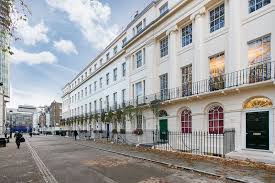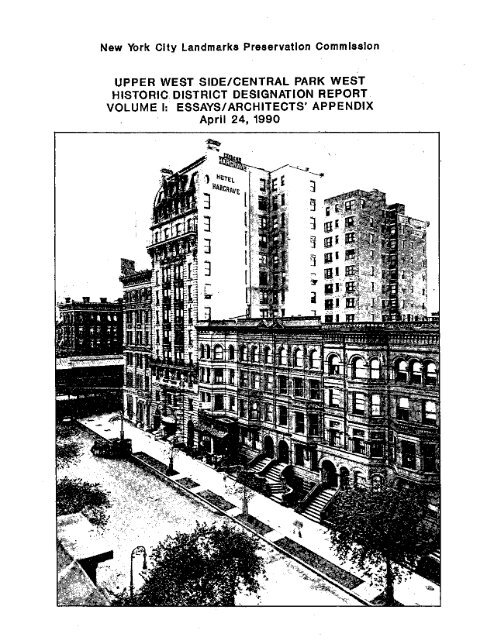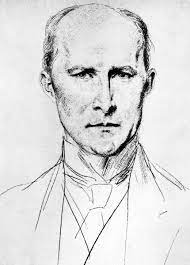A few months ago, I was thrilled to be asked by the Charleston Farmhouse to lead my walk through Bloomsbury for a group attending their Bloomsbury Revisited event in London. You can download a shorter version from the Voicemap.me website. But, if you’re not able to walk around London listening to me on headphones, I have posted the text of the walk here with photos, so you can follow along from anywhere. There are three parts, Tavistock Square, Gordon Square and Fitzroy Square. Here is Part 3:
- Grafton Way near Tottenham Court Road
Welcome back! But for those of you just joining us, I’m Dr. Kathleen Dixon Donnelly and I am your guide for this walk.
My research was about writers and artists who ‘hung out’ together in salons in the early part of the last century, on either side of World War I. The four groups are Irish poet William Butler Yeats and his friends who founded the Abbey Theatre; Virginia Woolf and Bloomsbury, of course; Gertrude Stein and the American writers in Paris, and Dorothy Parker and the Algonquin Round Table.
Yeats ended his poem, The Municipal Gallery Revisited, with the lines:
Think where man’s glory most begins and ends,
and say my glory was I had such friends.’
so I have used ‘Such Friends’ as the title for all my work about ‘my’ writers and artists.
Here we are in the heart of Bloomsbury, heading towards Fitzroy Square where Virginia lived with her brother Adrian, when they were in their 20s. The Northumberland Arms pub across the street is a great spot for a pint.

Northumberland Arms pub, Grafton Way and Tottenham Court Road
Let’s talk about one of the other Bloomsberries, writer and publisher Leonard Woolf.
After graduating from Cambridge University, Leonard joined the Colonial Service and was assigned to represent the crown in Jaffna, Ceylon, now Sri Lanka. He realized the absurdity of a 25-year-old with no experience taking charge of an entire country. Leonard spent seven years there, and, ironically, while Virginia’s brother Thoby Stephen died from a misdiagnosis of typhoid in London, Leonard was successfully treated for it in the jungle.
Leonard was not happy in the post, and in 1911 he applied to come back to England on leave. He had kept in touch with his university friends—many of whom were, like him, members of the Cambridge association, the Apostles.
Although the Apostles were then a ‘secret’ society by invitation only, they became less secret in the 1950s when it was revealed that British spies Guy Burgess and Kim Philby had been members when they were recruited by the Communist Party.
Leonard had met Virginia and Vanessa Stephen years before when they had come to visit Thoby at Cambridge. Later, Leonard wrote of his first impression of the sisters:
Their beauty literally took one’s breath away…One stopped astonished…It was almost impossible for a man not to fall in love with them and I think that I did at once.’
Even in Ceylon, Leonard had corresponded with Cambridge friends, such as Lytton Strachey, who wrote him letters about the lovely evenings he would spend in conversation with Virginia, Vanessa, Duncan Grant, Clive Bell and Maynard Keynes. So when Leonard came home, he couldn’t wait to get back in to the cultural and social life of his friends. He and Virginia became re-acquainted when he came to dinner one summer night at Gordon Square in 1911.
In the Bloomsbury group, I identified Leonard as the ‘Sponsor.’ He might not have been the most witty, or social, or rich, but he served as an administrator with Roger Fry’s art exhibits and, with Virginia’s help, bought the printing press to start Hogarth Press. The Sponsor in each group either had the money or resources—like Edward Martyn, the philanthropist behind the Abbey Theatre and other Irish institutions, or Robert McAlmon, an independent publisher in Paris—or got the money—like Leonard, or Harold Ross the founder of The New Yorker magazine.
Let’s walk down to Fitzroy Square.
- Fitzroy Square
Approaching Fitzroy Square, the newer building on your left is the Indian YMCA. This is one of your tips on where to eat cheap in London; they have a lovely cafeteria with great curries.

Indian YMCA, Fitzroy Square
A few years ago I attended a travel writing workshop here. It was advertised in the Guardian newspaper, and I figured it was a good omen that it was in Bloomsbury.
The writer who taught the daylong session gave us an assignment for our lunch break. When he announced what it was, I couldn’t believe my ears. He wanted us to
write about this neighbourhood.’
Seriously. I had been in training for that assignment for more than twenty years!

Fitzroy Square
Like many sections of Bloomsbury, Fitzroy Square has a colourful history. Lytton’s parents had a house here in the 19th century. In the Edwardian era, Augustus John had a studio in Number 8, where Vanessa and Duncan had studios and parties in the 1920s. Painter Walter Sickert had a studio in Number 19. Vanessa studied with Sickert, and you might have read that American crime writer Patricia Cromwell has fingered him as Jack the Ripper.
Duncan and Maynard lived here together in Number 21, and in World War I, Belgian refugees were held here. None of these have plaques.
We’ll walk over to Number 29, Virginia and her brother Adrian’s house. There’s a bench if you want to sit.
- Number 29 Fitzroy Square
Number 29 Fitzroy Square is the one with two plaques. George Bernard Shaw’s Irish family lived here in the late 19th century.

Your intrepid tour guide at Number 29 Fitzroy Square
In 1907 when Virginia moved in, she was 25 and living with her brother. While her married painter sister decorated Gordon Square with the latest in cubist art, Virginia and Adrian kept their interior simple. Adrian had a study full of books that looked out here onto the square.
To avoid competition, the sisters would alternate the at-homes on Thursday nights between the two locations; sometimes the guests would walk from one to the other, like we just did.
In her own home, hosting her own salons, Virginia’s confidence grew. She and Vanessa slowly realized why their brother’s friends weren’t interested in them as women—most were gay. The evenings were for conversation, and as Virginia wrote later, she would
stumble off to bed feeling that something very important had happened. It had been proved that beauty was—or beauty was not—for I have never been quite sure which—part of a picture.’
Now with
a room of her own,’
she began her first novel, Melymbrosia, eventually published in 1915 as The Voyage Out. She remembered later that she had the luxury of writing
in comparative splendour—[with] a maid, carpet, fires…’
Great parties were also held here, including one where Maynard and a topless Vanessa allegedly copulated on the floor.
But not all the evenings were a success. Virginia remembered that one had ended thus:
Adrian stalked off to his room, I to mine in complete silence.’
By the time Leonard showed up, in 1911, the lease on Fitzroy Square was up, so Virginia and Adrian were planning to move to a more communal arrangement with Duncan, Maynard and others, in Brunswick Square. They asked Leonard to join them.
However, shortly after they set up this friendly commune, Leonard decided that, instead of going back to Ceylon, he would propose to Virginia. After months of persuasion, she accepted. They married in August 1912 and moved to their own flat in Clifford’s Inn.
- Number 33 Fitzroy Square, the Omega Workshops
We’ll end our walk with the building to your left, Number 33.

Number 33 Fitzroy Square, currently undergoing refurbishment
Here we meet our last Bloomsbury, art critic Roger Fry, the ‘Link,’ where he opened the Omega Workshops.
Fry had had a studio in Fitzroy Square, but didn’t begin socializing with the others until a fateful day in 1910. He’d lost his job with the New York Metropolitan Museum, and had to commit his wife to an asylum. Fry was on the platform of the Cambridge railway station and recognized Vanessa and Clive Bell whom he’d met socially before. They chatted, and by the time they reached London, Roger was in the group!
At 43, Fry was older than the others, because each salon had a ‘Link,’ with better connections, who helped the younger ones become more mainstream. For the Irish, it was Lady Gregory, with the government connections to start a theatre; for the Americans in Paris it was Sherwood Anderson, already a successful novelist; and for the Round Table, FPA was the top New York columnist who publicized the others constantly.
Fry used inherited money to rent this building. In 1912 he opened the Omega Workshops with Vanessa and Duncan. Vanessa suggested having a Bloomsbury party to celebrate:
We should get all our disreputable and some of your aristocratic friends to come, and…there should be decorated furniture, painted walls, etc. There we should all get drunk and dance and kiss, orders would flow in, and the aristocrats would feel they were really in the thick of things.’
During these years, Vanessa and Roger carried on quite a torrid affair, in Bloomsbury and Sussex. At one point Clive asked his wife why Roger was around so often, but beyond that, he didn’t protest. He just got on with his own affairs.
The Omega was successful for five years, but was sold off in June 1919. Despite exhibitions and conferences and parties, the Workshops never covered their costs, and Roger, like all arts supporters, spent a lot of his time fund-raising.
Customers who had bought the fashionable handmade pottery and textiles included Yeats and Shaw, but also Ottoline Morrell, HG Wells, EM Forster, Rupert Brooke, Ezra Pound and Augustus John.
The workmen here tell me that, because this is a listed building, it is being renovated back to its original fittings, to be a private residence. There is a plaque, but it’s covered by the scaffolding now.

Blue plaque on Number 33 Fitzroy Square
And how did the group end?
Let’s go back to Maynard. He went to work in the Treasury department during the early part of ‘The Great War.’ His Bloomsbury friends, who were famously pacifist, were not happy about this job, which eventually contributed to the point I identify as the break-up of the group.
In January of 1915, Keynes celebrated his new role by giving himself a party at the fabulous Café Royal, near Piccadilly Circus. In-between Vanessa and Duncan he sat the infamous editor Edward ‘Bunny’ Garnett, and soon after those three were living together in a boathouse in Sussex.
Around the same time, Virginia and Leonard decided to move to Richmond. On her 33rd birthday, 25th January, 1915, they went for tea and resolved to buy Hogarth House, which they had seen out in Richmond, buy a printing press, and get a bulldog named John. Never got the bulldog.
Once one or more of the key players withdraw, the groups dissipate. Yeats stopped working with the Abbey; Gertrude Stein and Alice B. Toklas stopped inviting people to salons; and Robert Benchley left Dorothy Parker and friends to move to Hollywood to work in the movies.
Although the Bloomsberries still saw each other frequently, the days of wandering in and out of each others’ houses, staying up late drinking whisky and cocoa, were over. As Virginia remembered that time,
Talking, talking, talking,…as if everything could be talked—the soul itself slipped through the lips in thin silver discs which dissolve in young men’s minds like silver, like moonlight.’
Thanks for walking with me and our ‘Such Friends.’
If you missed the first two parts, you can search for ‘Such Friends’ Bloomsbury Walk, Part 1: Tavistock Square and Part 2: Gordon Square.
To read about American writers, Manager as Muse explores Scribner’s editor Maxwell Perkins’ work with F. Scott Fitzgerald, Ernest Hemingway and Thomas Wolfe and is available on Amazon in both print and Kindle versions.




























